Spiders, those lovely eight-legged creatures, are my eternal favourites as photographic topics. Here are my best spider shots from year 2016 (sadly, the season starts to be over for this year!).
Let me start with a classic: a perky, joyous, and cute jumping spider.
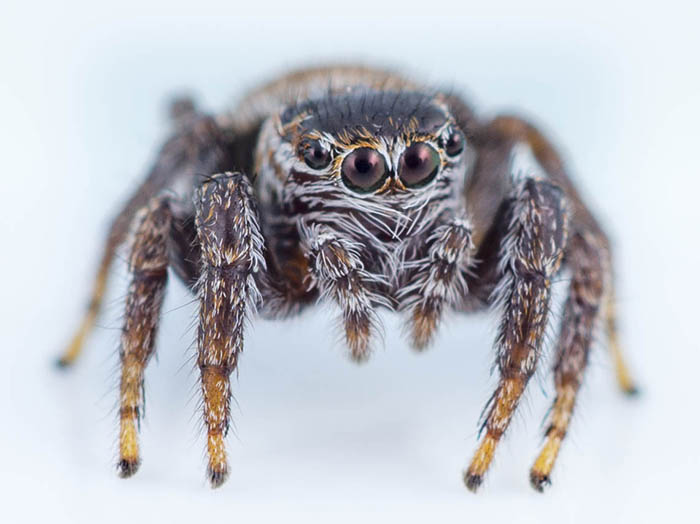 Evarcha sp.
Evarcha sp.
Evarcha sp., family Salticidae.
Goldenrod spiders (Misumena vatia) are mindfulness meditation freaks. They sit motionless for hours on a flower, mimicking the flower's white or yellow colour, calmly waiting for lunch to come to grabbing distance. When an insects lands on the flower and comes too close, the spider shows its awareness of the present moment. It hugs the hapless victim, pierces its exoskeleton with poison fangs, and injects venom. Lunch soon dies, and potent enzymes secreted by Misumena melt its insides into a tasty stew. The spider sucks the food out and throws the empty container to the ground. The motionless, hollow insect remains look eerily intact.
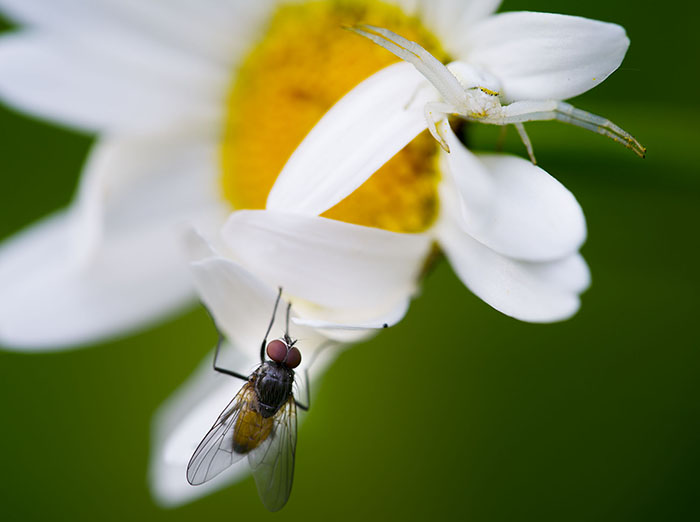 Misumena vatia spider (top right).
Misumena vatia spider (top right).
Top right: Misumena vatia spider. Lunch candidate: Thricops semicinereus fly.
While we're on the topic of crab spiders (family Thomisidae), let's throw in another one. The genus Xysticus offers a delightful range of uniquely grumpy arthropods:

Xysticus sp.
I guess it is in order also to show the first spider shot I got this year (in March), representing the family Philodromidae.
 Philodromus sp.
Philodromus sp.
Philodromus sp.
Wolf spiders of family Lycosidae are active hunters during daytime. They do not have any fixed home; they rather wander about in search of food. Females lay their eggs in tailor-made silken containers which they then carry around until the spiderlings hatch. Here is a Pardosa lugubris lady with her offspring maturing in the egg sac she holds with her spinnerets.
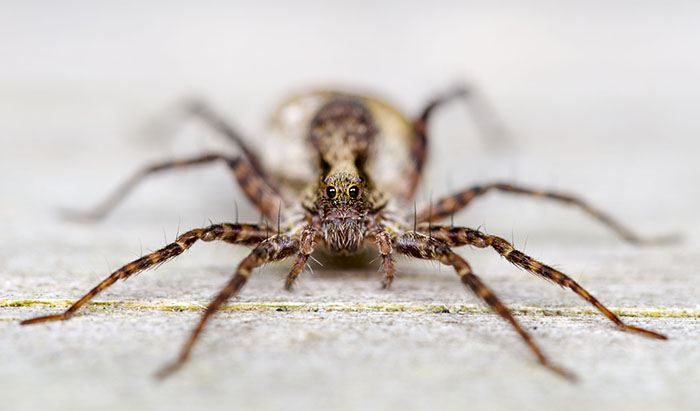 Pardosa lugubris
Pardosa lugubris
Pardosa lugubris female, with egg sac.
I have great respect for the elegance of the orb-web weavers from the family Tetragnathidae. Look at this one with her slender limbs and immaculate ornamentation:
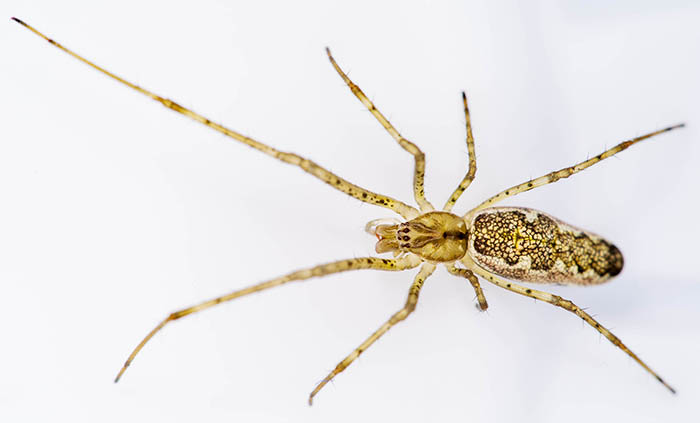 Tetragnatha dearmata
Tetragnatha dearmata
Tetragnatha dearmata
Talking about elegant shapes, how about this sheet-web weaver from family Linyphiidae? I just love the subdued colouring and the shiny finish of the surface.
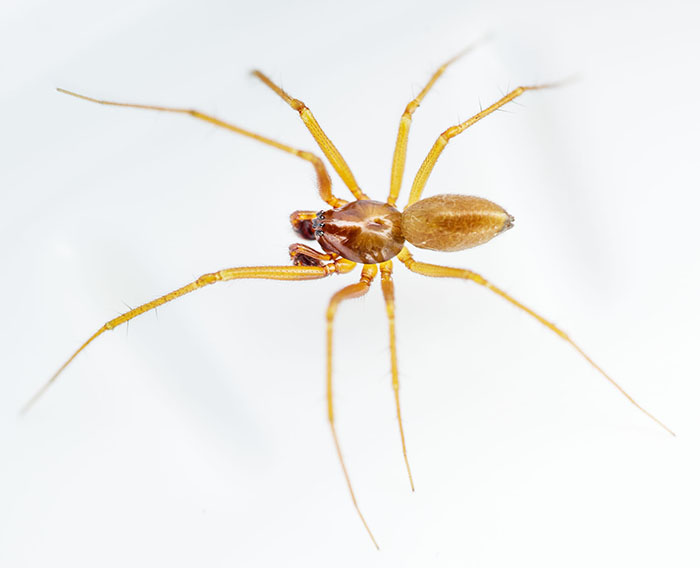 Helophora insignis spider
Helophora insignis spider
Helophora insignis
Staying with the family Linyphiidae and remarkable body shape designs, how about this male and his cone-like head?
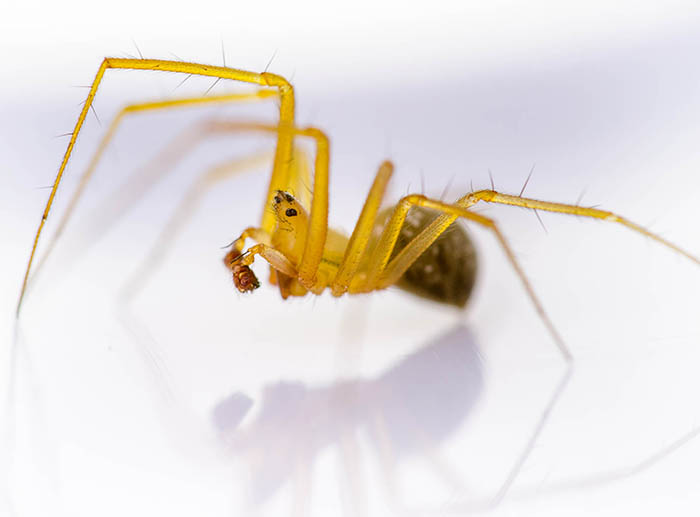 Bolyphantes alticeps spider
Bolyphantes alticeps spider
Bolyphantes alticeps
I shot this unidentified sample in its natural habitat. I believe it is also a linyphiid, but I do not know for sure.
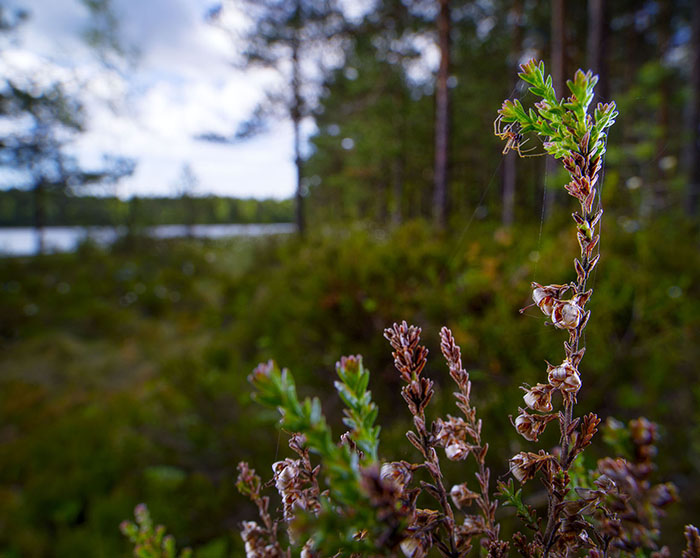
Unidentified spider
At this time, let me introduce a couple of specialities. On a work trip to Albuquerque, NM, USA, I had a chance to capture a black widow spider (Latrodectus sp.). It was a definite high point in my personal history of spider photography!
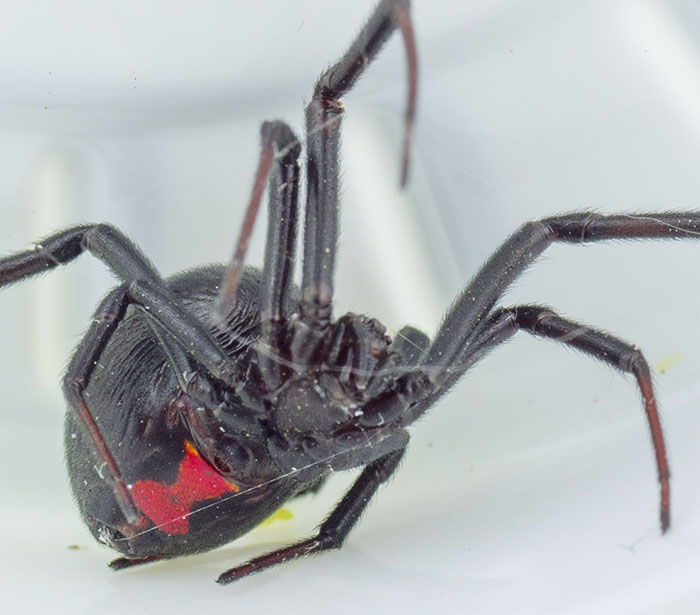
Latrodectus sp.
Another speciality is the Chilean recluse spider (Loxosceles laeta) I shot in Finland. There is only one population of them living in this cold country, inside the Natural History Museum in Helsinki. The spiders colonized the building sometime in the 1960's or 1970's; no one knows for sure how they got there. But there they are, enjoying the constant 20 Centigrade temperature provided by central heating! Here is a picture of that six-eyed species:

Loxosceles laeta
This is a good place to have a selection of cute jumping spiders, don't you think?
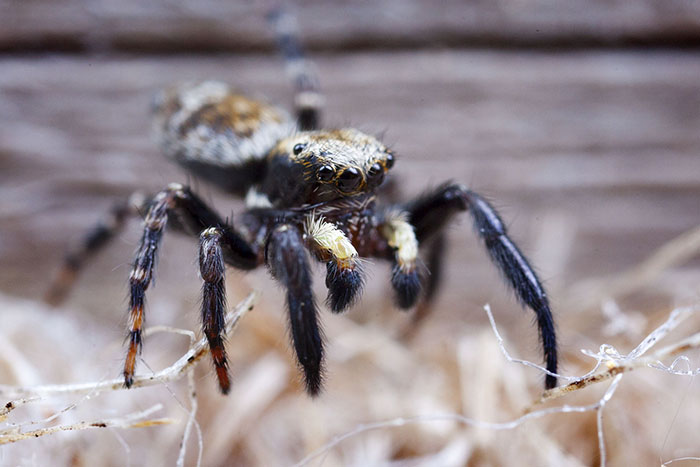 Pseudeuophrys erratica spider
Pseudeuophrys erratica spider
Pseudeuophrys erratica

Unidentified jumping spider
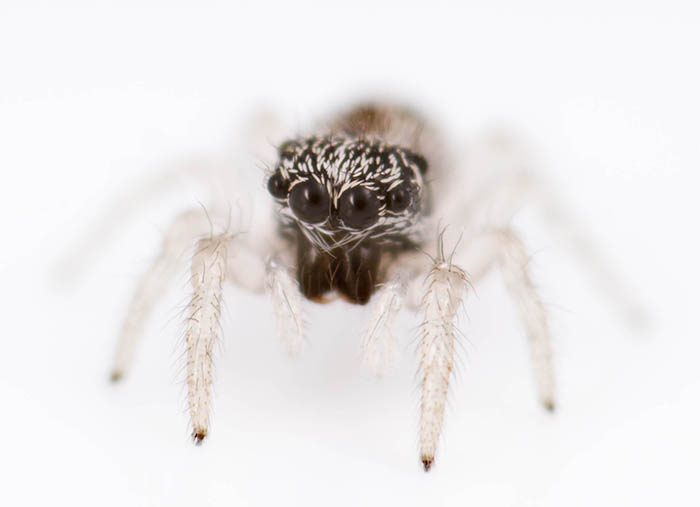
Unidentified jumping spider baby, probably genus Salticus
And finally, a photo about courtship and arachnid variety of love.

If you are interested in photographing spiders, you might enjoy this video.